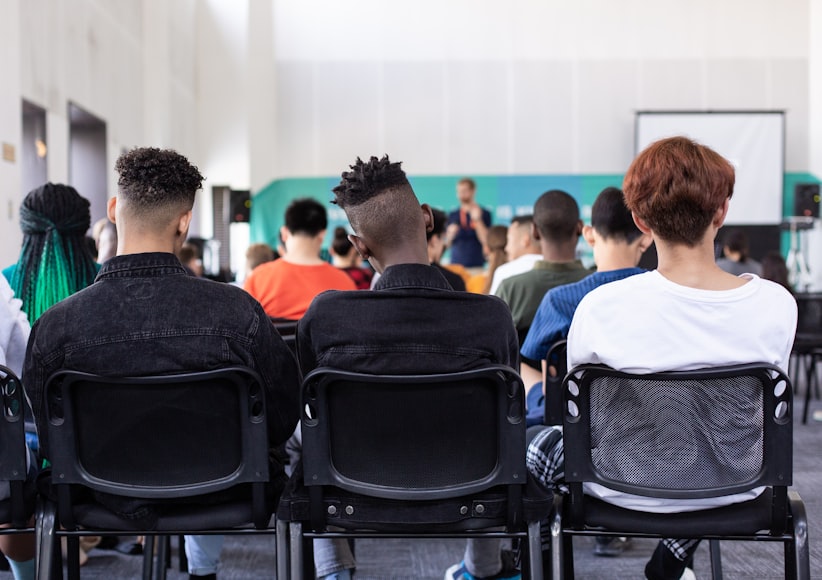
With today’s ever-diverse educational landscape, creating an inclusive classroom has never been more crucial. Not only will it enhance learning for all students but it will also promote understanding and respect of individual differences.
 Photo by Sam Balye on Unsplash
Photo by Sam Balye on Unsplash
Understanding Inclusion: What It Means
Before getting started on specifics on inclusion within an educational setting, it’s vital that we define exactly what inclusion means in terms of making learning accessible for every student and that each feels welcomed, valued, and capable of fully participating in their learning experience. Inclusion involves accommodating different learning styles, abilities and backgrounds in addition to making efforts that break down any barriers which may prevent full participation.
The Benefits of an Inclusive Classroom
Establishing an inclusive classroom has many tangible academic advantages. Its creation not only fulfils moral imperatives but can lead to tangible benefits as well. Studies have demonstrated how inclusive classrooms foster social skills development, academic performance enhancement and promote a sense of belonging among their student body. When children learn in this environment, they become better prepared for navigating and understanding diversity outside of the classroom environment.
Strategies for Establishing an Inclusive Classroom Environment
Foster a Positive Classroom Culture
To foster an inclusive classroom culture, start by setting clear expectations and norms which promote respect and kindness among your students. Encourage open dialogue and active listening so everyone feels heard and valued. Celebrating diversity through multicultural education is also important.
Discussing different cultures and histories enriches learning experiences and helps broaden one’s horizons. Activities that allow students to share their individual backgrounds and experiences will foster a sense of belonging among all members of the classroom community, creating an inclusive learning atmosphere where all are treated equally. This strong foundation encourages collaboration, understanding, and ultimately creates an efficient learning experience for all.
Conduct a Student Interest Survey
To better understand your students’ interests and needs, conducting a student interest survey can be highly advantageous. A great survey should feature various questions that allow your pupils to express their learning styles, favourite subjects, and extracurricular activities that they are enthusiastic about. By analysing this data, educators can tailor lessons and group activities around student preferences, making learning more engaging and relevant while also giving your pupils an outlet to voice their opinions while creating an inclusive educational experience for all involved.
Diverse Learning Materials
To promote inclusive classrooms, start by reviewing your curriculum and resources to ensure they encompass a diverse array of perspectives and experiences. Integration of books, articles, and media from diverse authors and creators is critical to ensure every student can find representation within the materials they encounter. By including various resources in their teaching practice, educators foster a more inclusive learning environment where every student feels acknowledged and valued, ultimately heightening the educational experience overall.
Flexible Teaching Strategies
To establish an inclusive classroom, educators should utilise flexible teaching strategies that can meet the diverse needs of their students. This involves employing multiple teaching strategies, such as collaborative learning, hands-on activities, and technology integration, to meet different learning styles. By offering students options on how they interact with content (be it through group projects, independent research projects or creative presentations) teachers can empower their pupils to take control of their learning journey. Assessing student progress and adapting instructional approaches regularly allows teachers to adapt lessons specifically to individual student needs, increasing participation and comprehension while creating an inclusive learning environment where every learner can thrive.
Promote Collaborative Learning
Collaborative learning can play a pivotal role in creating an inclusive classroom environment. By strategically pairing students, educators can give them an opportunity to pool their strengths and support each other on their individual learning paths. Engaging students in group activities and collaborative projects not only develops social skills but also facilitates meaningful relationships. Engaging in group activities allows them to build interpersonal skills while creating an atmosphere in the classroom where every member feels included and valued. Engaging students in group activities teaches them about community by helping them recognize and value different contributions made by their classmates, creating an inclusive atmosphere where everyone feels welcome and included.
Offer Differentiated Support
Differentiated support is key for meeting the diverse needs of students within a classroom environment. By understanding each student’s learning style, strengths, and areas for growth teachers can customise instruction accordingly to maximise its efficacy. Tailoring support ensures all learners can engage with the curriculum at their own pace, increasing confidence and competence while building self-reliance. Flexible grouping strategies enable students to collaborate with classmates who share similar needs or abilities, creating an atmosphere of belonging while encouraging peer-to-peer learning. Differentiated support fosters an inclusive classroom in which all children have equal chances for success and development.
Create an Accessible Environment
Physical accessibility is vital in creating an inclusive classroom environment. To accommodate all students, particularly those with mobility challenges, it is crucial that your layout of the room be carefully considered when creating it. Arranging furniture and resources so they are easily accessible for everyone should be the aim. Clear pathways must also be created so mobility aids can navigate without interruption. Utilising assistive technologies such as speech-to-text software or audio resources can greatly enhance learning experiences for students with disabilities. Teachers should prioritise accessibility in order to create an inclusive classroom setting where every child feels valued and can contribute fully, furthering their educational journey and success.
Ongoing Professional Development
Inclusivity is an ever-evolving practice that necessitates ongoing learning and development for educators to promote an inclusive educational environment.
To foster such an environment, educators should participate actively in professional development opportunities tailored toward inclusive education. Collaboration among colleagues provides a platform to share strategies, resources and insights that can enhance teaching practices. Staying current with research and trends in inclusive education is vital to maintaining the effectiveness and relevance of instructional methods.
By prioritising continuous growth and encouraging collaboration among teachers, inclusive educators can foster an environment that meets diverse learning needs while enriching overall student experiences.
 Photo by Antenna on Unsplash
Photo by Antenna on Unsplash
Conclusion
Building an inclusive classroom is not a destination, but an ongoing journey every educator undertakes. By cultivating a positive culture, employing diverse materials, and employing flexible strategies you can create an atmosphere in which all learners thrive, creating a community of respect and understanding in which everyone feels welcomed and valued. When employing inclusive practices in the classroom remember that small steps taken consistently over time can produce significant change.

No Comments